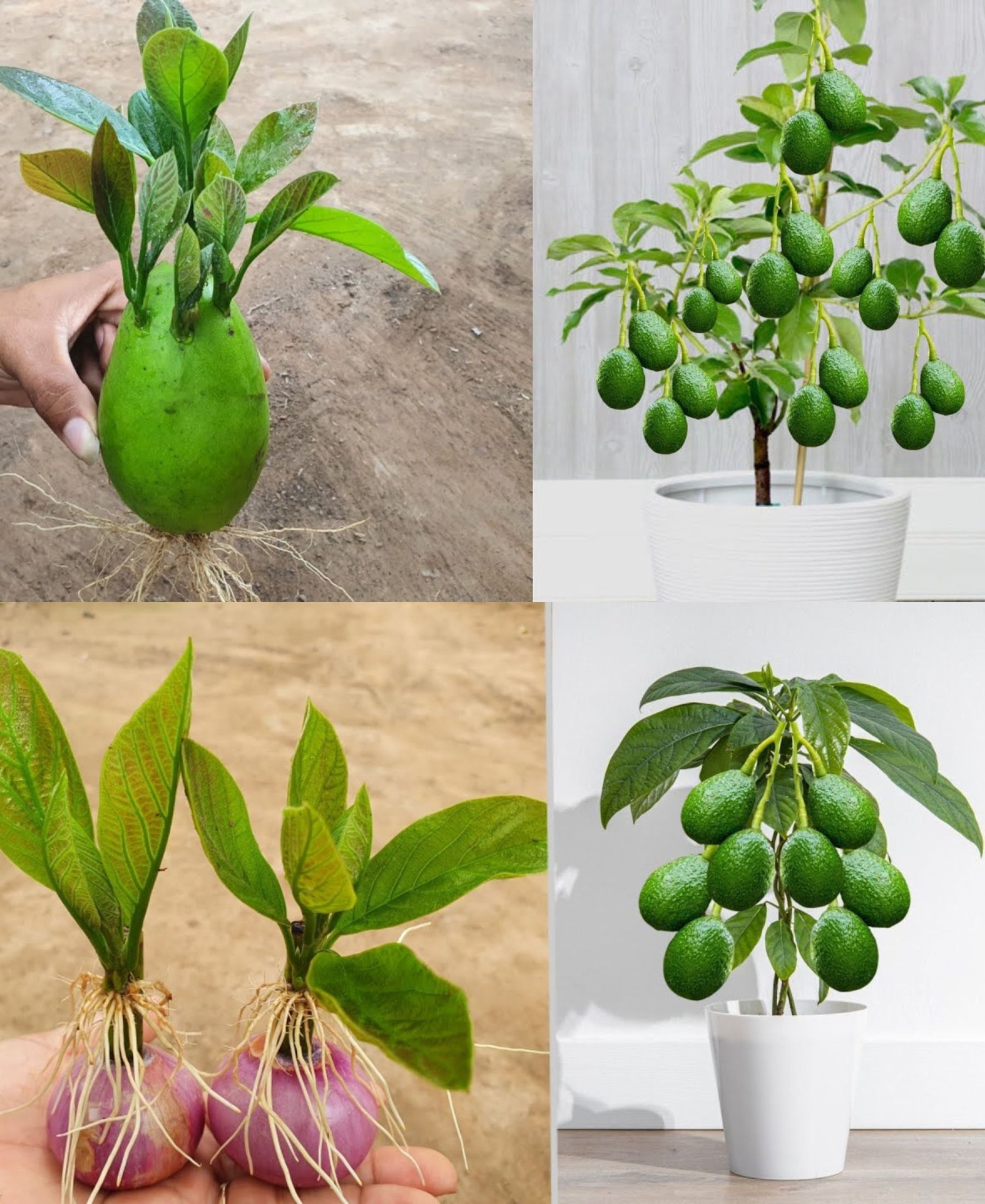
Growing avocados at home can be a rewarding experience, but it requires patience and proper care, as avocado trees can take several years to bear fruit. Here’s a guide to help you grow avocados for a bounty of fruits:
1. Starting from Seed or Sapling
- Seed: You can start an avocado tree from a pit. Clean the seed and insert three or four toothpicks around its middle. Suspend it over a glass of water with the broad end down, ensuring the bottom is submerged. Place it in a warm, sunny spot and wait for it to sprout, which can take several weeks.
- Sapling: For a head start, purchase a young avocado tree from a nursery. This is often the better option if you want to harvest fruit sooner, as trees grown from seed can take 7-15 years to bear fruit, while grafted saplings can produce fruit in 3-4 years.
2. Choosing the Right Variety
- Select a variety suitable for your climate. Hass is popular for cooler areas, while West Indian varieties are better for tropical climates. Some varieties, like the cold-hardy Mexicola, can tolerate temperatures as low as 20°F (-6°C).
3. Planting
- Soil: Avocado trees prefer well-draining soil. Amend heavy clay soils or consider raised beds or large containers if drainage is an issue.
- Location: Choose a sunny spot protected from strong winds. Avocado trees need full sun to produce fruit.
- Planting: Dig a hole as deep as the root ball and twice as wide. Place the tree in the hole and backfill with soil, being careful not to bury the trunk deeper than it was in the pot.
4. Watering
- Avocado trees need regular watering, especially during the establishment phase and in dry conditions. However, avoid overwatering, as this can lead to root rot.
5. Fertilizing
- Feed your avocado tree with a balanced fertilizer several times a year. Young trees need nutrients to grow, while mature trees need support for fruit production.
6. Pruning
- Prune to shape the tree and encourage branching. However, avoid heavy pruning once the tree is established, as this can reduce fruit yield.
7. Pollination
- Avocado trees have unique flowering behavior, with some varieties being “Type A” and others “Type B” in terms of their pollination times. Having both types can increase pollination and fruit set.
- Consider planting two trees for better cross-pollination if you have space.
8. Protection
- Protect young trees from frost by covering them or using a frost cloth. Mulch can help regulate soil temperature and retain moisture.
- Watch for pests like aphids, mites, and borers, and treat them promptly with appropriate methods.
9. Patience
- Be patient, as it can take several years for an avocado tree to mature and produce fruit. Proper care during this time is crucial.
10. Harvesting
- Avocado fruits do not ripen on the tree. Harvest them when they reach mature size, then allow them to ripen at room temperature.
- Test for ripeness by picking a large fruit and letting it sit for a few days. If it softens, the rest of the crop is likely ready to harvest.
Tips for Growing Avocados in Containers
- Choose a dwarf variety if you’re limited on space or want to grow the tree in a container.
- Ensure the container is large enough and has good drainage holes.
- Container-grown trees will need more frequent watering and fertilizing than those in the ground.
Growing avocados at home can be a long-term commitment, but with the right care, you can enjoy the fruits of your labor. Remember that climate plays a significant role in the success of your avocado tree, so make sure to choose a variety that will thrive in your specific conditions.
